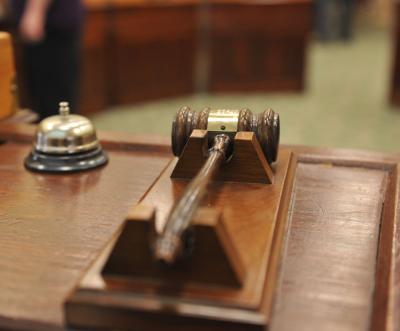Later this month, city councillors will debate a motion to reduce the size of council by one.
As I've said before, the idea of reducing a 10-member council by only one is likely to generate a certain “Meh” response from the public.
And a comparison with other municipalities, included in a report with the motion, suggests that indifference may be justified.
It all depends on what the numbers mean to you.
It's simple math: the higher the number of councillors you have, the lower the number of people represented by each councillor.
And the fewer the residents, the likelier each one of them will be, in theory, to have easy access to an elected representative.
It's an easy equation for Brockville to make, since there are no longer any wards. Each of the nine councillors represents everyone, and so we can carve “everyone” into nine separate units.
According to the staff report, “everyone” in Brockville means 21,870 people.
In Brockville, with nine councillors (excluding the mayor), each non-head-of-council politician represents 2,430 people.
That level of representation is comparable to places with similar population counts, such as Port Colborne (18,424 people according to the staff report, with eight councillors, 2,303 people per councillor) and Lincoln (pop. 22,487, with eight councillors and 2,811 per councillor).
In Leeds and Grenville, Brockville has the second-highest people-per-pol number, with North Grenville coming in first at 3,549.
Residents of Westport, the region's tiniest municipality, have the highest level of access to their pols, at least according to the number at 161 people per rep.
We will leave aside, for the moment, the question of whether some politicians work harder than others, and whether some make themselves more difficult to reach.
If your democracy is working, after all, those who don't perform optimally are supposed to be kicked out in the next election.
We must also leave aside the question of whether or not to exclude the mayor from these calculations, as the city does here.
The thinking, one supposes, is that the mayor, along with responding to constituents with noise complaints, must also do other head-of-council stuff like attending higher-level meetings with senior government, making the comparison more difficult.
In practice, however, the mayor is often the first member of council an irate voter will try to call.
Going with the city's math, then, a drop of one councillor would raise the people-per-pol number in Brockville to 2,733.
A difference of 303 people. Still lower than North Grenville. Meh....
A reduction of council by two members still puts us below North Grenville, at 3,124.
Brockville would have to cut its number of councillors to six (or a seven-person council with the mayor) before its single-councillor representation rises to 3,645, or slightly above North Grenville.
One takeaway from this might be that North Grenville Mayor David Gordon is a little lonely at the top of such a rapidly-growing township.
Another might be that each community must decide its own level of representation.
In London, Ontario, for instance, there are 26,153 people per councillor. That's an entire order of magnitude above any dickering over 303 people.
Still, that jump of 303 people per representative might make a difference in how Brockvillians think Brockville should be governed.
And if it does, we will see more people at the inevitable public meeting.
